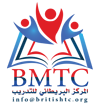Water Flooding: A to Z of Best Practices Design and Implementation of Water Flooding
Why Choose this Training Course?
This course provides engineering aspects of successful projects of water flooding and main reasons for failures. It covers analysis and application of water flooding including reservoir drive mechanisms and fluid properties, theory, prediction methods of frontal flow theory, Dykstra-Parsons and Lorenz, main components of water flooding plant, surface production facilities, and water flood problems and optimization.
The course presents process description, pattern selection, injectivity calculation, and design’s procedure. Furthermore, the course provides detailed analysis produced water and its required chemical treatment unit. It describes important measurements of water flooding to identify main problems, examine treatments and provide solutions. Actual field cases for optimum application will be explained with in-class exercises.
This course will feature:
- Basics rock and fluid properties controlling water flooding
- Selection a candidate reservoir for water flood and design criteria
- Components of water flood plant and stages of actual field case application
- Calculation of water flooding injectivity and conductance ratio
- Analytical and prediction methods: Stiles and Dykstra-Parsons
- Diagnostics, indicators, and surveillance
- Surface facilities and water flood plant
What are the Goals?
By the end of this course, participants will be able to:
- Describe and apply surface and subsurface water flooding
- Understand and apply analytical and prediction methods
- Consider main elements to start a water flooding project
- Identify various components and function of a water flooding plant
- Identify water flood problems and select suitable alternatives to solve them
Who is this Training Course for?
This course is suitable to a wide range of professionals but will greatly benefit:
- Petroleum Production & operation staff
- Processing engineers & other discipline engineers
- Geologists & Petro physicists
- Engineers who are new to the profession
- Other individuals who need to know about water flooding
How will this Training Course be Presented?
This course will utilise a variety of proven adult learning techniques to ensure maximum understanding, comprehension and retention of the information presented. The course is designed as a blended environment of presentation, class exercises, field application/ analysis and several industry videos showing all processes.
The Course Content
Day One: Reservoir Properties and Design Factors of Water Flooding
- Elements of successful water flooding
- Water flood performance measurements
- Factor to consider to start a water flooding project
- Important factors to consider in water flooding design
- Types of water flood patterns and selection of a flood pattern
- Important rock/fluid properties for reservoir engineering calculation
Day Two: Frontal Displacement Theory and Water Flooding Injectivity
- Analytical models: Buckley-Leverett and Welge methods
- Calculation of time to breakthrough and cumulative water injected
- Calculation of water flood injectivity and stages of water flooding
- Prediction methods: Stile and Dykstra-Parsons
- Calculation of areal and vertical sweep efficiencies
- Main reservoir problems of water flooding project
Day Three: Problems/Solutions of Water Flooding
- Phenomena of water fingering and tonguing
- Casing, tubing or packer leaks and channel flow behind casing
- Moving oil-water contact and watered-out layer without crossflow
- Fractures or faults between injector and producer
- Calculation of critical rate for water coning
- Using reservoir simulation for water flood optimization
Day Four: Diagnostics, Monitoring, and Surveillance of Water Flooding
- Monitoring water flood techniques and used tools
- Diagnostics, indicators, and surveillance of water flooding
- Well Diagnostics for water control using different ways
- Recovery plot, production history plot, and decline-curve analysis
- WOR diagnostic plot plus shut-in and choke-back analysis
- Special diagnostics for Vertical Communication
Day Five: Water Control Solutions
- Mechanical solutions for water-control problems
- Chemical solutions and squeeze cement treatments
- Rigid gels for near wellbore shutoff of excess water
- Injector problems and risk assessments
- Field-wide considerations for water flooding
- An integrated approach for cost saving operations

